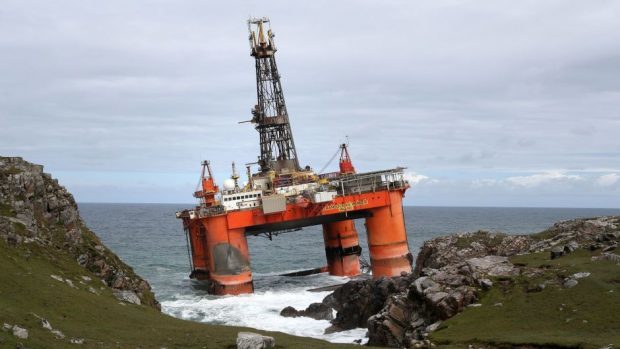The boss of the UK Coastguard insisted last night the decision to withdraw an emergency tug from the west coast of Scotland had been “vindicated”.
Sir Alan Massey, chief executive of the Maritime and Coastguard Agency (MCA), claimed it would take a “very unfortunate coincidence or some very bad luck” to prompt any consideration of a return to two towing vessels.
And he told MPs he couldn’t find any evidence to suggest a second tug, based in Stornoway, would have altered the outcome of the Transocean Winner disaster.
The 17,000-tonne offshore drilling platform was being towed by MV Alp Forward from Norway to Malta when it broke adrift during a storm and subsequently ran aground off the Isle of Lewis in August.
Some 30 ballast and fuel tanks on the unmanned 33-year-old rig subsequently ruptured, spilling fuel into the sea.
The incident was the focus of the Commons transport committee meeting at Westminster yesterday.
Chairwoman Louise Ellman asked what would have to happen for a second UK Government-funded tug to be reinstated, given the concerns which had been raised by some in the Highlands about the unprotected Atlantic front.
Sir Alan replied: “We made the judgment, back in 2011, that zero was the wrong answer, [but] one was a workable answer, provided we took all the risk assessment into account, and made a sensible balance of what are the real hazards against the likelihood and, of course, let’s not forget the value for money for the taxpayer.
“Over five years, that has been vindicated by circumstances.”
Pressed on the issue again, he added: The evidence I have at the moment from five years of operating under the single emergency towing vessel (ETV) around Scotland is that one has been adequate. It has been used on five occasions over the five years.”
His comments were immediately criticised by the SNP’s Angus MacNeil, who said the key point was that when there were two vessels, the MCA did not say only one was needed.
The Western Isles MP added: “If you work for the MCA, the UK Government is your paymaster and you will do as you are told.”
Lib Dem Northern Isles MP Alistair Carmichael said: “It’s clear the coastguard agency has never understood or appreciated the need for our tugs.
“It is depressing that, even after such a close call as we saw with the Transocean rig, they continue to insist the tugs are not necessary.”
The former Scottish secretary also questioned why the rig was being towed where it was in the circumstances it was.
Publicly-funded ETVs were deployed in the wake of the 1993 oil tanker disaster in which the Liberian-registered MV Braer ran aground in a hurricane, shedding its load off Shetland.
As a result of spending cuts, the four vessels serving the UK five years ago – two of which were based in Scotland – have been whittled down to just one, based in Orkney.
It was due to be removed from service in September, but the government announced in July it had been saved for another five years.
